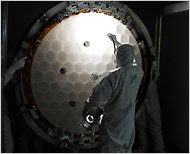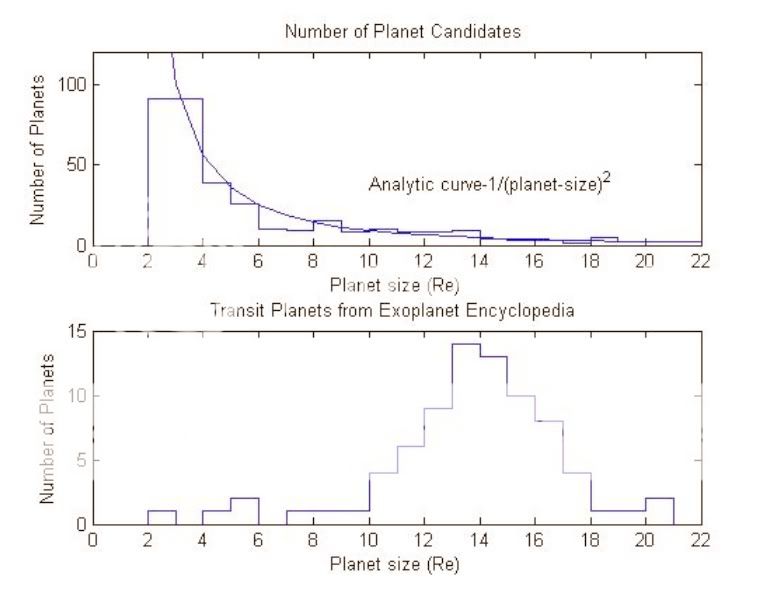I am still waiting for Kepler to release more data, but in the meantime I checked their Blog and it seems they had a dissapointment (CCD module) in late Feb. Here is an excerpt from the Feb-18 Blog:
On the plus side, the changes we made back in September seem to be working great and our pointing accuracy has been superb, with no more incidents of the unexpected drops into our coarse-point mode. I did tell you about that, didn't I? We're continuing to make minor tweaks in the spacecraft operation to improve performance or reduce risks, and looking forward to the day when we can't find any more improvements to make, all to make the data better with less noise.
In December, we changed some settings on a heater that was cycling on and off every few hours and was somehow showing up in the stellar brightness measurements (somehow it seems to be affecting focus very slightly). Hours is about the duration of a planetary transit, so we really don't want things changing on that time scale. On the other hand, the heater is cycling to keep the reaction wheels warm, and we count on these wheels to keep us pointed accurately. So what we did is narrow the temperature limits, and now the heater cycles every 12 minutes or so, and isn't such a bother.
We are also getting ready to make some changes to the software running on the spacecraft. Updating the software requires us to reboot the processor, something you don't want to do very often, because there's always the chance it won't come back on! But we've been saving up a few minor bug fixes, and now have a more important bug to fix. It sent us into Safemode in November, and as long as we're going to fix that one, we're going to do the others, too. But we'll do a lot of testing first, and we'll make the update in April, during one of our regularly scheduled data downloads.
Otherwise, things are going rather well, so I don't have a lot to write about. Not that that seems to have inhibited me much.
Actually, there was a new development in January that had us hopping. In fact, it's delayed this update while we worked on it. It seems that one of our detector modules died.
Hopefully it's only dead, not dead dead, and maybe we can revive it. But it doesn't look good. This is the most serious issue we've had since we started gathering science data.
One of our modules (Module 3, on the edge of our field of view) stopped working on January 9. Since then it's been dark, with no star images.
The Kepler focal plane is approximately one foot square. It's composed of 25 individually mounted modules. The 4 corner modules are used for fine guiding and the other 21 modules are used for science observing. Attached are some pictures that show a single science module and the assembled focal plane with all 25 modules installed. Note that the fine guidance modules in the corners of the focal plane are very much smaller CCDs than the science modules.
Under normal operations, each module and its electronics convert light into digital numbers. For the darkest parts of the image between stars, we expect these numbers to be very small (but not zero). Correspondingly, for the brightest stars in the image, much larger numbers are expected creating an image of each observed star and its background neighborhood. The numbers we see coming out of failed module 3 are all very similar in size and considerably lower than the normal levels. These numbers produce an image that looks like the "snow" on a television that has very bad reception. There are no stars visible in these images.
There are several ways a module to go bad, such as a blown fuse, a shorted or broken wire, or the failure of individual parts. The Kepler detectors were fabricated to rigid standards and subjected to rigorous testing on the ground before launch. And the design contains several redundant features to prevent the failure of a module, but the space environment is unforgiving and failures do occur. The fact that this anomaly affects all four channels on one module will help determine the probable cause.
Depending upon what caused the module to stop working, we might be able to recover it, though the flexibility of the Kepler design is limited in this extent. Even if the module is recoverable, it will be several weeks before recovery actions are taken because we need to review the current performance and design to ensure that any recovery steps do no further damage to the focal plane or spacecraft. I mean, the last thing we want to do is lose more modules while we try to recover this one!
The module that has stopped working is on the periphery of the field of view. Since the Kepler spacecraft rotates by 90 degrees every three months, this module would normally observe a different portion of the Kepler field of view each season, as shown in the following image. Hence, no part of the Kepler field of view has been rendered unobservable it's just that four regions are only observable three out of four seasons, or 75% of the time, if the module is unrecoverable.





